Every year the people of TPGi make the pilgrimage to CSUN. The faces may change, the venue may change, but TPGi has been a force to reckon with at CSUN for many years. This year was no exception, we had a crop of first time CSUN speakers and old hands, that thrilled and informed to bumper audiences!
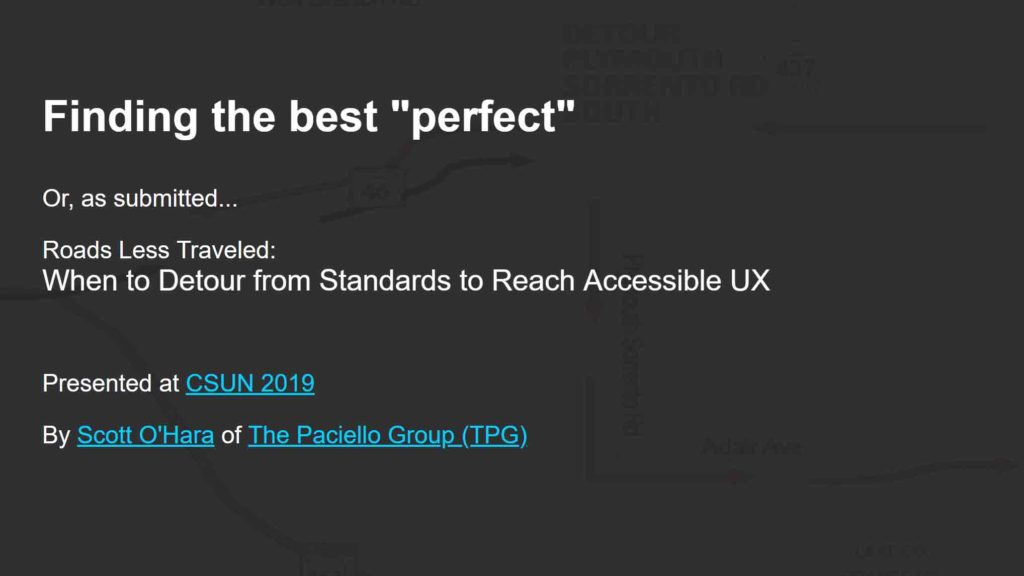 Roads Less Traveled: When to Detour from Standards to Reach Accessible UX
Roads Less Traveled: When to Detour from Standards to Reach Accessible UX
Presented by Scott O’Hara
HTML, ARIA and WCAG are our directions to accessible destinations, but what should we do if roads are under construction? We take detours!
View the slides for Roads Less Traveled.
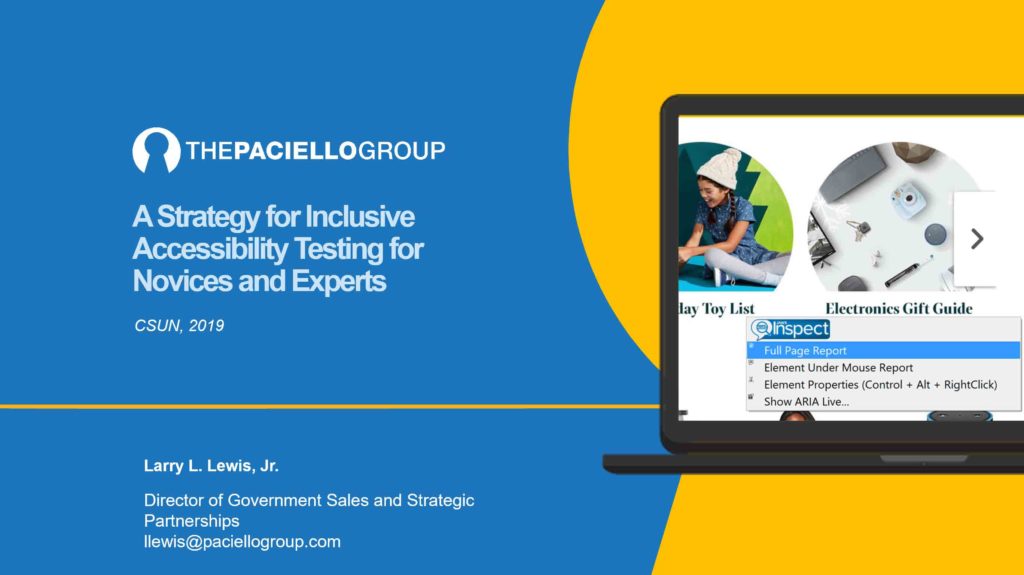 A Strategy for Inclusive Accessibility Testing for Novices and Experts
A Strategy for Inclusive Accessibility Testing for Novices and Experts
Presented by Larry Lewis
The session showcased an inclusive approach to using manual test tools to perform accessibility testing on web content through the visualization of a screenreading experience.
View the slides for A Strategy for Inclusive Accessibility Testing for Novices and Experts (PPT, 2.4MB).
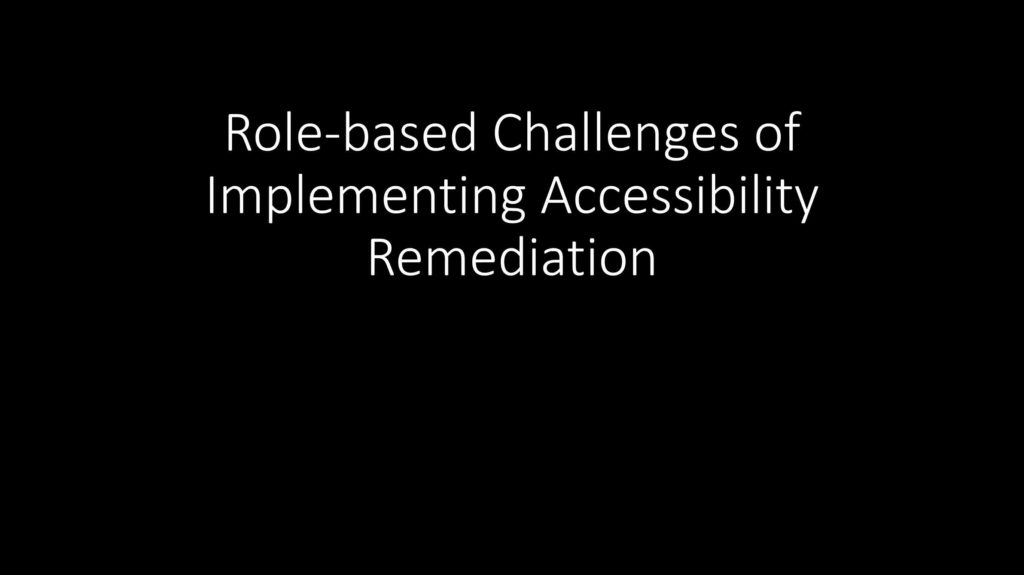 Role-Based Challenges of Implementing Accessibility Remediation
Role-Based Challenges of Implementing Accessibility Remediation
Presented by Justin Stockton
Representing various project roles, Justin discussed the challenges an accessibility review has on each role given a series of shifting project variables.
View the slides for Role-Based Challenges of Implementing Accessibility Remediation (PPT, 56kb).
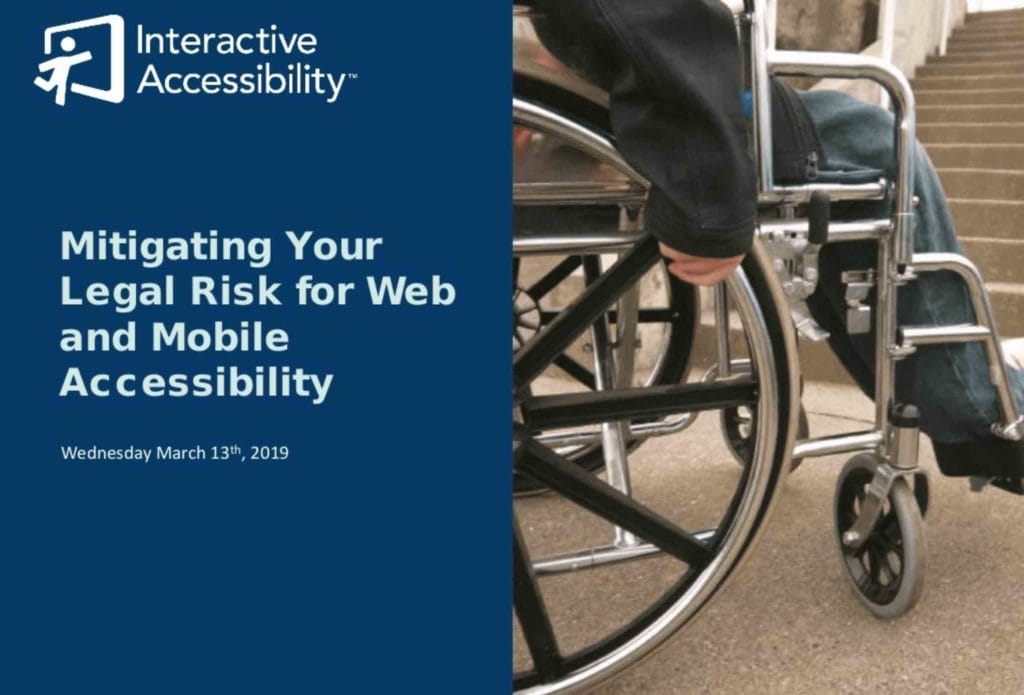 Mitigating your Legal Risk for Web and Mobile Accessibility
Mitigating your Legal Risk for Web and Mobile Accessibility
Presented by Kathy Wahlbin
Kathy discussed the top five things you can bring to your organization to mitigate the legal risk associated with web and mobile accessibility.
View the slides for Mitigating your Legal Risk for Web and Mobile Accessibility.
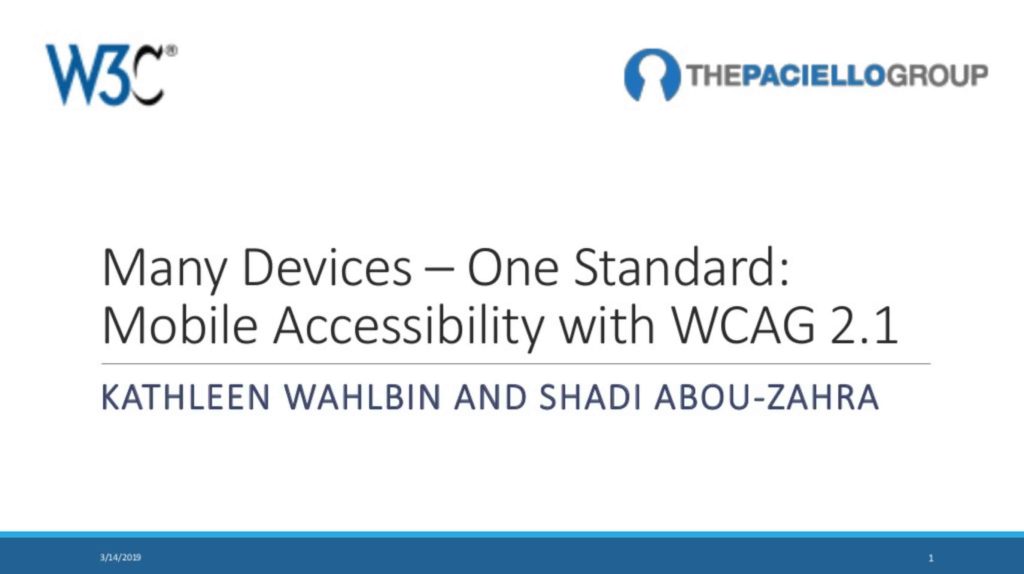 Many Devices, One Standard: Mobile Accessibility with WCAG 2.1
Many Devices, One Standard: Mobile Accessibility with WCAG 2.1
Presented by Kathy Wahlbin & Shadi Abou-Zahra (W3C WAI)
Explore how WCAG 2.1 helps you design accessible desktop and mobile websites and applications for a variety of devices, including smart phones and beyond.
View the slides for Many Devices, One Standard.
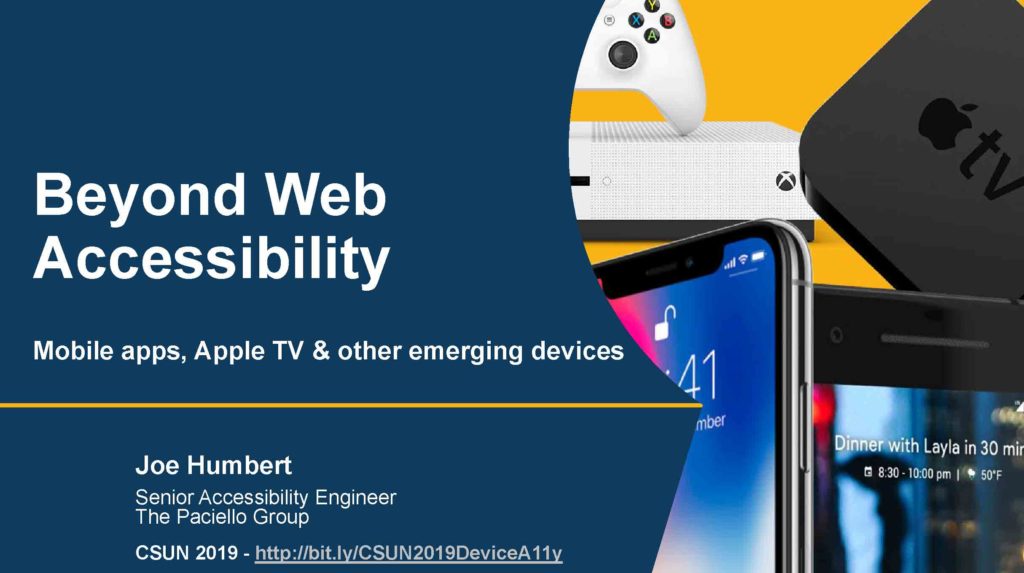 Beyond Web Accessibility: Mobile Apps, Apple TV, and other Emerging Devices
Beyond Web Accessibility: Mobile Apps, Apple TV, and other Emerging Devices
Presented by Joe Humbert
As more new devices emerge on the market, how well do they and their applications support people with disabilities and conform to WCAG 2.1?
View the slides for Beyond Web Accessibility (PDF, 802kb).
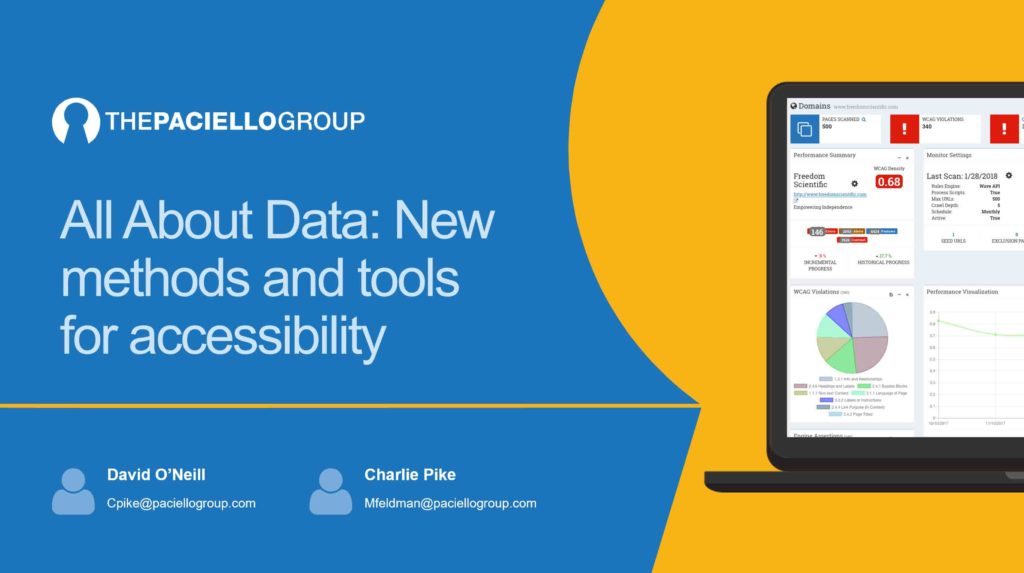 It’s All About Data: New Methods and Tools for Accessibility
It’s All About Data: New Methods and Tools for Accessibility
Presented by David O’Neill & Charlie Pike
In the era of Artificial Intelligence and Big Data there are new smart ways to explore the trends and processes that underlie accessibility issues.
View the slides for It’s All About Data (PPT, 7.3MB).
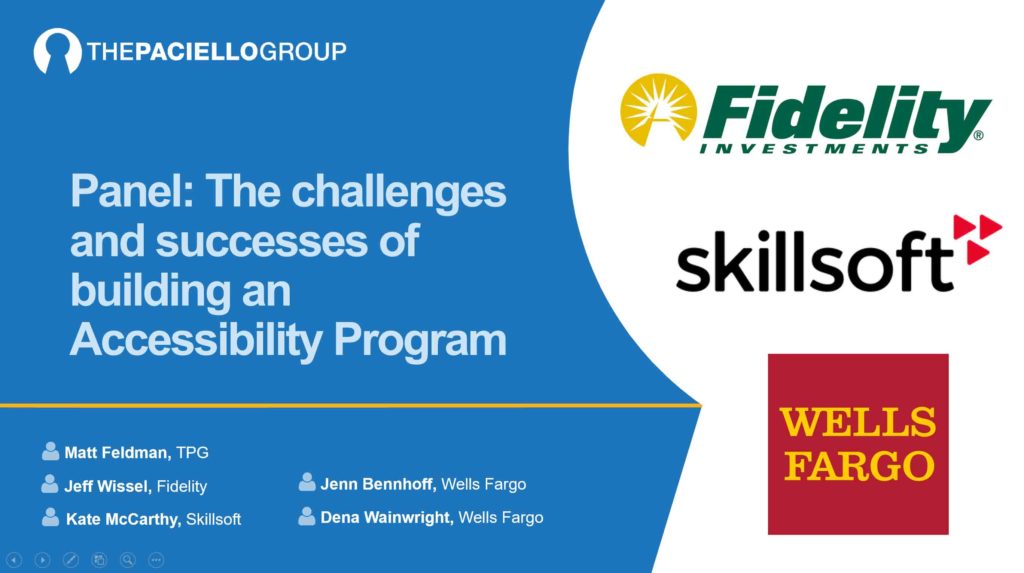 The Challenges and Successes of Building an Accessibility Program
The Challenges and Successes of Building an Accessibility Program
Presented by Matt Feldman, Kate McCarthy (Skillsoft), Jeff Wissel (Fidelity), Dena Wainwright (Wells Fargo), Jenn Bennhoff (Wells Fargo)
Learn about the perspective of three accessibility program leaders as they detail the challenges and successes in maturing their accessibility programs.
There are no slides from this session as it was a panel discussion.
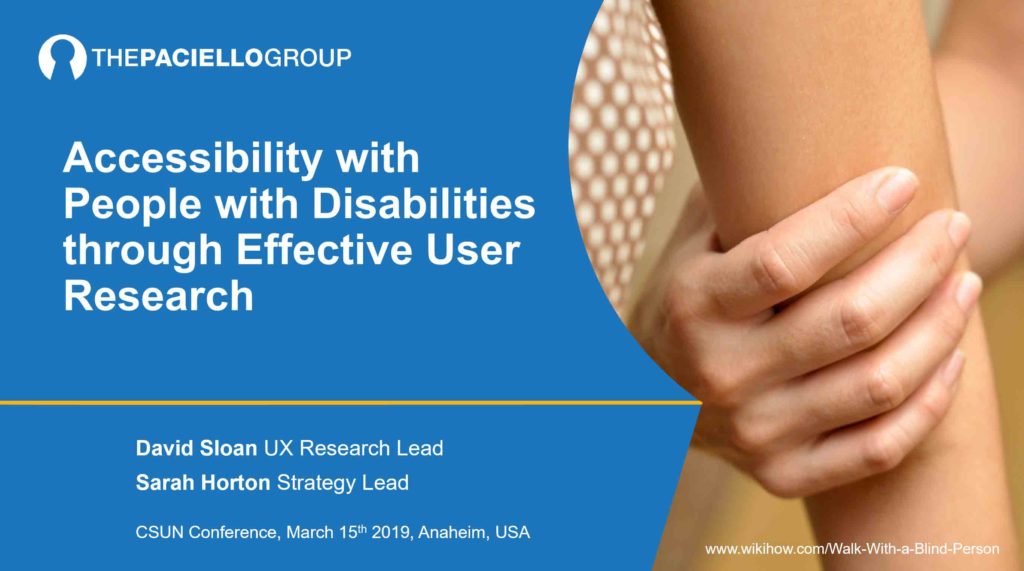 Accessibility with People with Disabilities Through Effective User Research
Accessibility with People with Disabilities Through Effective User Research
Presented by David Sloan & Sarah Horton
For inclusive and innovative digital products, design decisions should be informed by quality user research with diverse populations. We share some practical advice for effectively involving people with disabilities in UX research throughout the design process, from exploration to evaluation.
View the slides for Accessibility with People with Disabilities Through Effective User Research (PPT, 3.5MB).
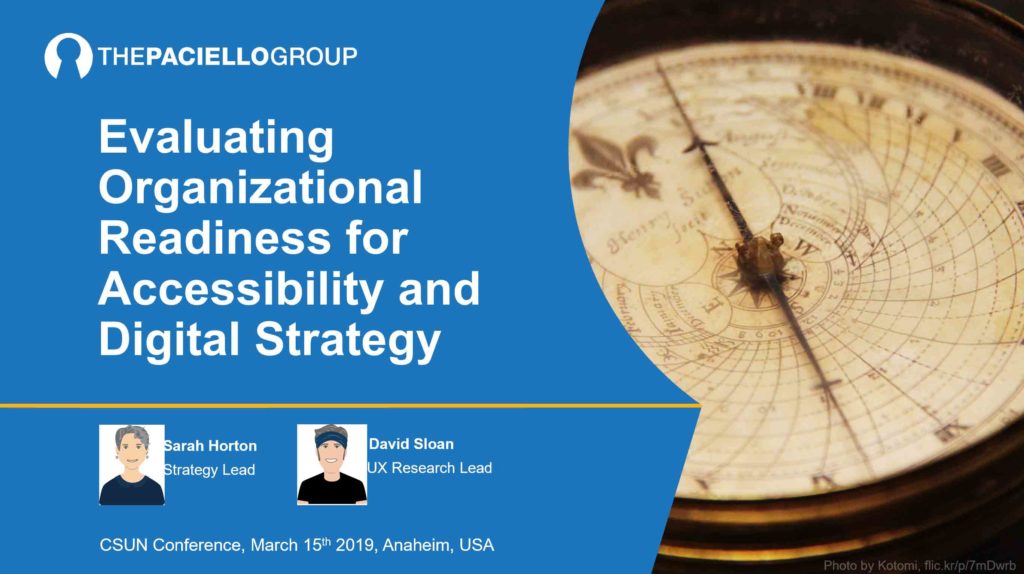 Evaluating Organizational Readiness for Accessibility
Evaluating Organizational Readiness for Accessibility
Presented by Sarah Horton & David Sloan
Move towards accessibility maturity by starting where you are and understanding where you can go. Sarah & David shared a framework for building a successful program.
View the slides for Evaluating Organizational Readiness for Accessibility (PPT, 3.6MB).
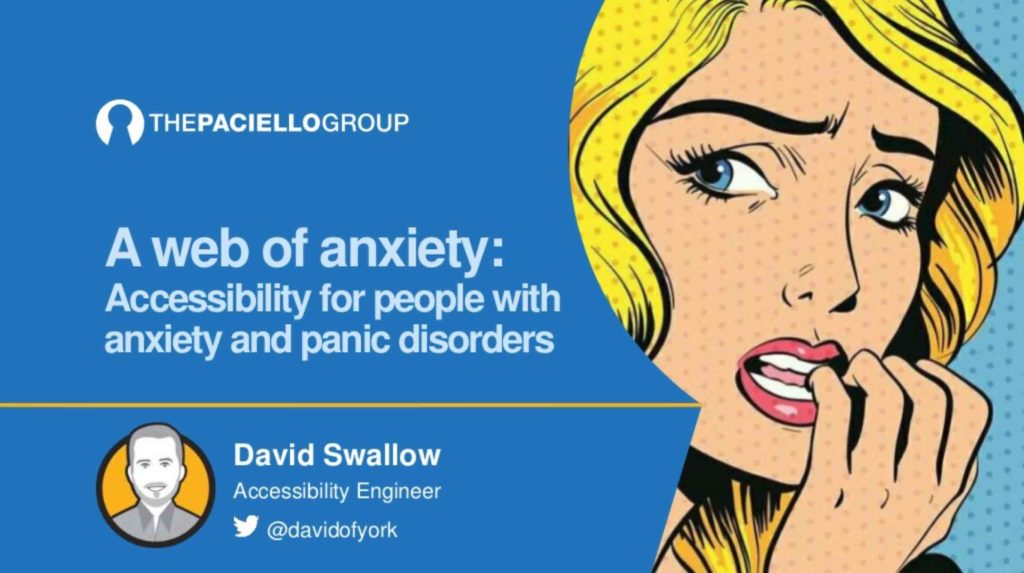 A Web of Anxiety: Accessibility for People with Anxiety and Panic Disorders
A Web of Anxiety: Accessibility for People with Anxiety and Panic Disorders
Presented by David Swallow
David examined how UI/UX design can contribute to feelings of anxiety and panic and explores how to improve accessibility for people with anxiety and panic disorders. For more detail, read part 1 and part 2 of his blog posts on this topic.
View the slides for A Web of Anxiety.
If you have questions about any of our slides, find us on Twitter or contact us through this site.

Comments
Has anyone every noted problems accessing the CCA from a web toolbar? On IE and Firefox (not sure about other browsers), this causes a message to display that the application cannot be closed. You have to use the computer Task Manager to close the CCA or restart your computer to close the CCA. The message also displays some “Chinese” characters. When the application is launched from the desktop, it closes properly.